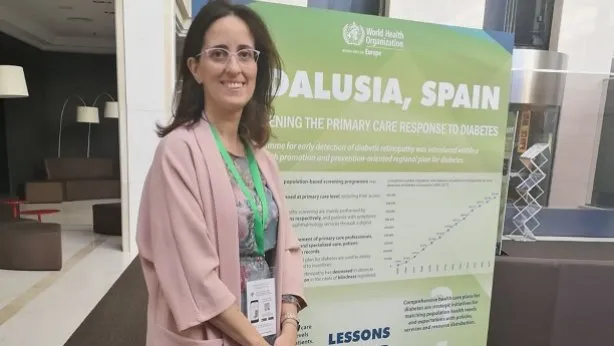The Early Detection Program for the Diabetic Retinopathy of Andalusia has been recognized as a good practice by the World Health Organization (WHO), at the regional High-Level Meeting Meeting: Health Systems Respond to NCDS, held in Sitges, Barcelona.
This project has been selected, together with two other Spaniards, as one of the 16 European initiatives that are being carried out to address noncommunicable diseases, such as diabetes, cancer or cardiovascular diseases.
According to María Asuncinez Brocca, director of the Comprehensive Diabetes Plan of Andalusia, "this recognition confirms the clinical effectiveness of the program and, when giving visibility, it favors that it can be replicated in other countries or regions included in this organization.
It also implies recognition of the integral approach that from the Andalusian public health system we develop through the Comprehensive Diabetes Plan and, above all, to the work of thousands of primary care professionals. "
Since its launch in 2006, the program has enabled the early detection of diabetes and has reduced the number of possible blindness caused by this pathology."We have progressively increased the coverage rate on the Diana population (people with diabetes without diabetic retinopathy), which currently reaches 95 percent (424,648 patients included in the program and more than 750,000 retinographies)," Martínez explained.
The majority of the tests performed (84 percent) were informed as normal, which means that a significant proportion of patients have been able to be screening at their closest and accessible point of care, such as their health center, thus avoiding displacements andunnecessary sanitary costs derived from hospital care.
Thanks to this program, 46,597 cases of diabetic retinopathy that have been identified and treated in ophthalmology services have been detected.The estimated reduction of cases of diabetes blindness in Andalusia is 15.2 percent in the period 2000-2014.
"Our goal," Martínez concludes, "is to improve the efficiency of the program by incorporating technological tools that allow automated reading of non -pathological images and is currently in assessment."
In addition, a prioritization system has been established in the realization of monitoring retinographies, adapted to the individual risk of each patient, through the analysis of the program data and that has been incorporated into the diabetes care process as a recommendation of clinical practice.


